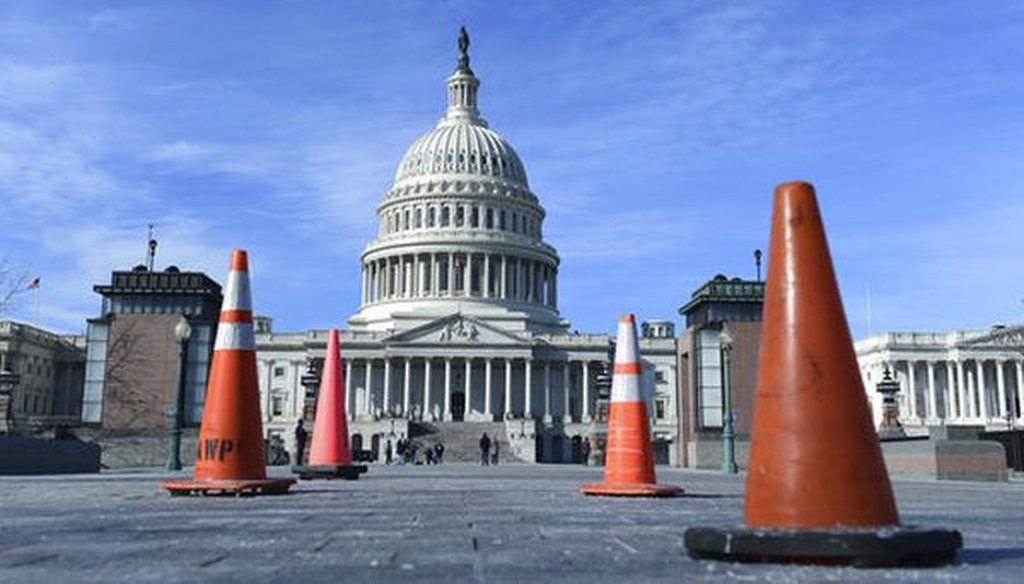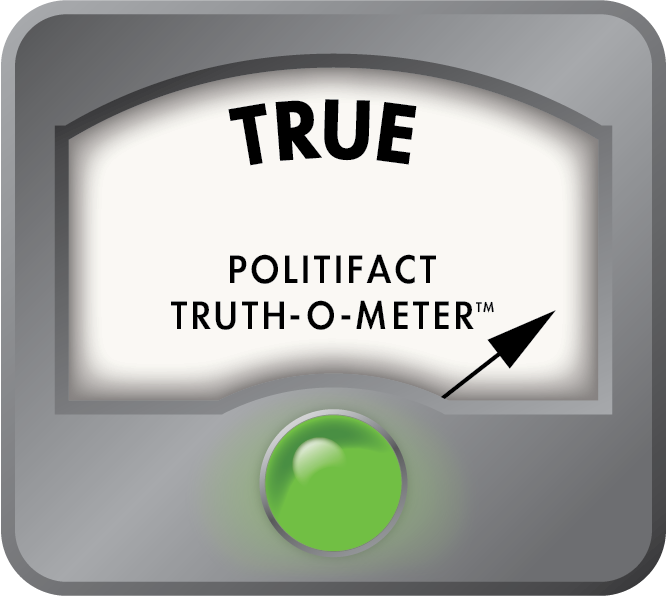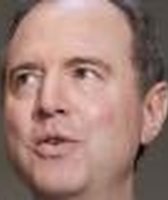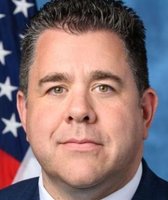Stand up for the facts!
Our only agenda is to publish the truth so you can be an informed participant in democracy.
We need your help.
I would like to contribute

Construction cones stand along the sidewalk at the U.S. Capitol on Jan. 19, 2018. (AP /Susan Walsh)
Updated January 20, 2018.
A government shutdown has happened for the first time since 2013.
President Donald Trump, the Republican-controlled Senate and House and the congressional Democratic minority are fighting over how to extend spending for federal operations after the current authority expired on Jan. 19. The key roadblocks are not so much differences on spending levels, but rather on separate issues, notably a renewal of legal status for "Dreamers," people who had been brought illegally to the United States as children.
Here’s what happens when government funding expires.
What is a shutdown?
Sign up for PolitiFact texts
Federal government shutdowns occur when spending bills expire, and Congress and the president find themselves at an impasse.
Shutdowns have a constitutional basis, from Article I, Section 9, which says, "No Money shall be drawn from the Treasury, but in Consequence of Appropriations made by Law."
This has been reinforced by the Antideficiency Act, which stems from an 1870 law that has been revised periodically over the years. There is some leeway to continue certain federal activities that are deemed essential.
How common are shutdowns?
There have been 18 shutdowns since 1976, according to the Congressional Research Service.
However, the impact of these shutdowns has changed significantly since 1980.
Prior to 1980, many federal agencies continued to operate during funding gaps, assuming that money would be restored soon and that Congress didn’t intend for them to close down. But in 1980 and 1981, then-Attorney General Benjamin Civiletti issued two opinions that required agency heads to suspend operations until funding began to flow again.
The only activities that could go forward, Civiletti wrote, were those where there is a connection "between the function to be performed and the safety of human life or the protection of property," or where otherwise "authorized by law."
Some post-1980 shutdowns were devoid of partisan warfare and quickly resolved. That changed in the mid 1990s, when President Bill Clinton squared off against a new Republican majority in the House and Senate. One shutdown lasted for five days in November 1995, and the other went on for 21 days, from December 1995 to January 1996.
After 17 years without a shutdown, President Barack Obama, a Democratic-controlled Senate and a Republican-controlled House failed to reach an agreement on spending, resulting in a two-week shutdown in 2013.
In a shutdown, who works and who doesn’t?
During the 2013 shutdown, as many as 850,000 workers were furloughed per day, or about 40 percent of the federal workforce (not counting active-duty military personnel and U.S. Postal Service workers). Roughly 6.6 million employee work days were lost in the 2013 shutdown, with "furloughs affecting workers at the vast majority of agencies," according to the Office of Management and Budget.
Civiletti’s guidance for retaining employees whose jobs involve public safety and the protection of property continues to determine who works and who doesn’t.
The decisions about individual positions has traditionally been made by senior executives and legal advisors at each agency. In addition, work by federal contractors can be heavily impacted.
How is the military affected?
Active-duty military personnel have always been required to work through shutdowns. Army troops don’t abandon their posts and naval ships don’t all return to port. In addition, many civilian workers in the Defense Department have been ordered to work through shutdowns.
Other civilian workers in the Defense Department, however, hold jobs that do not meet the urgency threshold to keep working. In 2013, the government furloughed about half of its civilian workers, or about 400,000 employees, leaving a patchwork of various permissible and impermissible activities, according to Federal News Radio.
Meanwhile, veterans’ health services would generally continue unabated.
How does a shutdown affect ordinary Americans?
During a shutdown, some government functions may continue, either because Congress has already passed a spending bill for a particular department, because an agency is reliant on funding other than congressional appropriations, or because it is considered vital for the safety of human life or the protection of properties.
However, many activities cease for as long as a shutdown is under way. Here are just a few of the activities that have stopped during previous shutdowns, according to the Congressional Research Service:
• New patients were not accepted into clinical research at the National Institutes of Health, and hotline calls about diseases went unanswered.
• The Centers for Disease Control and Prevention ceased disease surveillance.
• Recruitment and testing of federal law-enforcement officials stopped, in one case including the hiring of 400 border patrol agents.
• National Park Service sites and national museums and monuments closed to visitors.
• Work on visa and passport services stopped.
• Inspections for food, consumer products, and workplace safety could not be carried out.
• The Internal Revenue Service was unable to verify income and Social Security numbers in 2013, producing a backlog of 1.2 million requests that may have delayed mortgage and loan approvals.
Would a shutdown affect my tax refund?
Possibly. In 2013, some tax refunds were delayed. This year, work on implementing the newly enacted tax bill — such as updating software and providing staff to answer questions from taxpayers — would likely be hampered, and the processing of tax returns could be affected.
Will I stop getting my mail?
The mail will keep coming, because the U.S. Postal Service is not dependent on federal appropriations for its day-to-day operations.
What happens to the courts?
In many cases, courts have been able to shift money around to keep key operations running during previous shutdowns, though some functions — such as the handling of civil cases and building maintenance — were affected. If the shifted money eventually ran out, many court duties would be considered essential, meaning that judges and other core staffers would avoid being furloughed.
In fact, due to a constitutional prohibition against cutting judicial pay, judges and Supreme Court justices would keep collecting paychecks. Other court staff may need to wait for their paychecks until the shutdown ends, like other federal employees.
Would Social Security checks go out?
If past is prologue, then yes.
Social Security is a mandatory program supported by a trust fund, so Social Security benefits don't have to be formally approved by Congress every year. However, the Social Security Administration employees who literally cut the checks and stuff the envelopes are paid through appropriated funds.
The question about a government shutdown is whether those employees would be kept from going to work and, if so, whether the checks would sit idle rather than arriving in mailboxes nationwide. (This is also a relevant question for other types of federal payments, such as veterans’ benefits.)
Historically, at least, shutdown regulations have been flexible enough to provide leeway for federal workers to carry out core Social Security functions, so checks have always gone out in the past. However, some activities, such as the issuance of new Social Security cards, may not continue during a shutdown.
How much does a shutdown cost?
"A shutdown is a huge waste of taxpayer dollars, disruptive of government operations, and simply bad management," said John Palguta, a former federal human-resources official who is now an adjunct professor at the Georgetown University Public Policy Institute.
The most thorough report examining the 2013 shutdown comes from an Office of Management and Budget analysis.
• $2.5 billion in compensation costs for furloughed workers (whose lack of pay for two weeks hampered consumer spending);
• 120,000 fewer private-sector jobs created in the first half of October;
• $500 million lost in visitor spending because of closed National Parks ;
• $11 million in lost National Parks and Smithsonian Institution revenue;
• Interest accrued on billions of dollars of payments owed to third parties that the government was unable to pay during the shutdown;
• Resources spent on putting activities in standby or maintaining them in an idle mode;
• 1.2 million Internal Revenue Service identity verification requests that couldn’t be processed, causing a delay in private-sector lending and other activities;
• Stalled approvals from the U.S. Food and Drug Administration delayed moving products to market.
Private financial analytics companies also estimated a negative effect on the economy.
Mark Zandi, chief economist for Moody’s Analytics, said the 2013 shutdown stunted fourth quarter GDP growth by 0.5 points, resulting in a $20 billion hit. Standard & Poor's said the shutdown took $24 billion out of the economy and reduced yearly fourth quarter GDP growth by 0.6 percent. Macroeconomic Advisers estimated the shutdown cut 0.3 points off of fourth-quarter growth
All told, when Sen. Rand Paul, R-Ky., said that "it cost us more to shut the government down than to keep it open," we rated it True.
Are the workers who stay on the job paid?
Not immediately, at least.
Employees who are required to work are not paid until a new spending bill is passed— meaning they are effectively working for free, at least temporarily.
Furloughed workers have historically been compensated for back pay through subsequent congressional action, though there is no requirement that such a bill be passed. In 2013, the Office of Management and Budget estimated that $2.5 billion in pay and benefits was paid for hours not worked government-wide.
As the 2013 shutdown was going on, Congress and Obama agreed to a bill in the middle that paid all active-duty and many civilian Defense Department employees. This enabled Defense Department employees to return to work while the shutdown was still under way for workers in other departments.
Can furloughed employees go to work if they want?
No, furloughed employees are barred from working during a shutdown, "except to perform minimal activities as necessary to execute an orderly suspension of agency operations," according to the Office of Personnel Management. "An agency may not accept the voluntary services of an employee."
Federal employees theoretically could take another job during their period of furlough, but they would have to run a gauntlet of ethical approvals that makes this option unlikely. They also may qualify for unemployment insurance, though the turnaround time for receiving benefits from their jurisdiction may reduce the feasibility of this option.
Our Sources
U.S. Office of Personnel Management, "Guidance for Shutdown Furloughs," accessed Jan. 17, 2018
Congressional Research Service, "Shutdown of the Federal Government: Causes, Processes, and Effects," Nov. 30, 2017
Congressional Research Service, "Government Shutdown: Operations of the Department of Defense During a Lapse in Appropriations," Oct. 15, 2013
Office of Management and Budget, "Agency Contingency Plans," accessed Jan. 17, 2018
Committee for a Responsible Federal Budget, "Q&A: Everything You Should Know About Government Shutdowns," Jan. 10, 2018
Federal News Radio, "What happens to defense workers if the government shuts down?" April 25, 2017
Federal News Radio, "DoD to bring back most employees from shutdown furlough," Oct. 5, 2013
Reuters, "Factbox: What happens in a U.S. government shutdown?" Jan. 18, 2017
Washington Post, "Congress asked the IRS to implement a massive new law. Now it could send more than half its workers home," Jan. 19, 2018
PolitiFact, "Would the military shut down if the federal government does?" Jan. 17, 2018
PolitiFact, "Rand Paul rightly says the government shutdown was more expensive than keeping it open," Aug. 7, 2014
PolitiFact, "Paul Ryan says government shutdown wouldn't sideline Obamacare," Aug. 8, 2013
PolitiFact, "Newt Gingrich says shutdowns are 'normal' process, with 12 under Tip O’Neill and two under Gingrich," Oct. 4, 2013
PolitiFact, "Barack Obama said Social Security and other federal checks may not go out on Aug. 3 if the debt ceiling is not increased," July 13, 2011
PolitiFact, "Debbie Stabenow says government shutdown ‘could disrupt’ veterans' benefits," April 6, 2011


 PolitiFact Rating:
PolitiFact Rating: 




















































